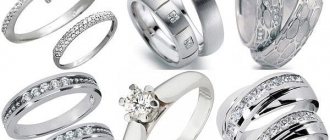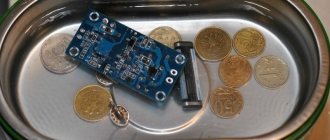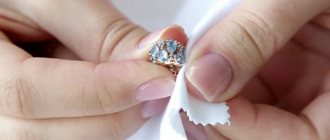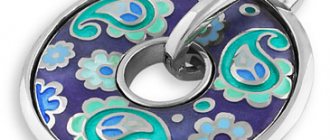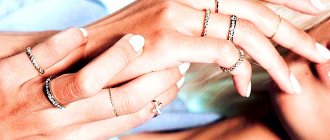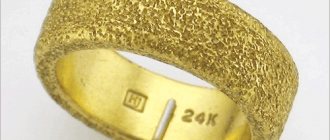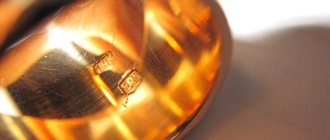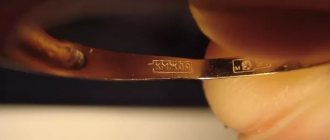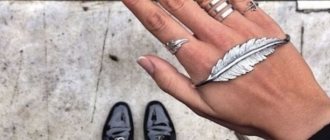White gold jewelry can be found for both women and men. This metal looks beautiful and noble, and products made from it are often practically works of art. In essence, this is not pure gold, the material is an alloy with impurities of palladium, nickel or platinum. And to increase its strength, white gold is plated with rhodium. In the Middle Ages, only noble and rich people could afford such jewelry.
Today, everything has changed and white gold has become much more accessible, but has not lost its attractiveness. Rings, earrings, bracelets and pendants made of this metal are in great demand and for this reason the question of how to clean white gold at home is very relevant.
Basic rules for cleaning white gold
If you decide to clean your jewelry yourself, you need to take into account the characteristics of the metal. Despite the protective coating, it is very soft and has low resistance to mechanical damage. For this reason, incorrect handling can lead to scratches and abrasions on the surface of the product.
How to clean white gold without damaging your jewelry? Follow these rules:
- Inspect the product for scratches and damage. If they exist, it is better not to take risks and entrust this work to a professional.
- When using toothpaste to clean, use only soft-bristled brushes. If you took a toothbrush, then it should be quite old and “worn”.
- When the product is decorated with stones, alcohol-containing substances cannot be used (including ammonia). These compounds can only be used if you are dealing with diamonds.
- When rinsing your gold after cleaning, be sure to thoroughly rinse off the substance you used.
- After rinsing under running water, do not leave the jewelry to dry naturally, but polish it with a soft cloth.
If white gold has turned black or a yellowish coating has appeared on it, you should not try to clean it yourself, it is better to contact a specialist.
Additional recommendations
When rinsing rings, chains or earrings, there is a risk of dropping them down the drain. To avoid this, you need to close the drain hole. After cleaning, you need to dry the products thoroughly. Moisture causes a white coating to form, which spoils the appearance.
How to save the result
Regular care of gold takes a little time, but allows you to preserve its beauty for a long time. It is advisable to remove rings during homework to protect them from dirt, chips, and scratches. This should also be done when visiting a public swimming pool. Such water contains a high content of chlorine, which is detrimental to rhodium plating. It is also recommended to remove jewelry before going to bed, playing sports, or taking a shower or bath.
Tips for proper storage
White gold should not be stored near heating devices or in direct sunlight. It is better to put it in closed boxes or caskets with soft upholstery. It is not recommended to use cardboard cases for storage, as they contain sulfur, which is harmful to gold.
Putting all your jewelry together is not a good idea. This way they can scratch each other. It's better to store them separately. If the box is shared, it is advisable that it have compartments for rings, chains, and earrings. Alternatively, you can separate the decorations into different bags.
Cleaning diamond jewelry at home is not difficult. Regular care, following simple rules of use and storage will help maintain beauty and shine for many years.
How to clean white gold at home
To tidy up your white gold jewelry, you can use the following methods:
- Soak the product in soapy water. Prepare a cleaning mixture and soak your earrings or ring in it for 15–20 minutes. Then remove the jewelry, clean it with foam rubber or a soft brush, and then rinse and polish with wool or flannel.
- Clean jewelry with toothpaste. Apply the product to the surface, brush with an old toothbrush, then rinse the product and wipe dry.
- Use ammonia (if the product has stones, the product can only be used if they are diamonds). Soak a cloth in the solution, clean the product, and then thoroughly rinse off the caustic composition. After washing, use a soft cloth to polish.
- Apply lipstick to the metal. The cosmetic product will remove minor stains and add shine to the product. Only wool or flannel cloth is used for cleaning and polishing.
- Soak the item in a cleaning solution of ammonia and white chalk. This method is suitable for cleaning very dirty jewelry. Add 5-7 drops of ammonia and a little chalk to ½ cup of water and place the decoration in the solution for 30 minutes. Then clean the surface using a cotton swab for hard-to-reach places, then rinse the product and wipe dry.
Keep in mind that the latter method should not be used if the item is decorated with pearls, malachite, opals, moonstone, turquoise or apatite.
Boiling Methods
If the product does not have stones or blackening, it can be cleaned by boiling. Don’t be afraid to do this - in this way you can very well and without any effort restore the enchanting shine of white gold and remove all impurities.
It is especially suitable for earrings, because they need to be disinfected regularly. And when boiling, all microbes that settle on hooks and fasteners will be guaranteed to be destroyed.
Method 1. Dissolve a teaspoon of dish washing gel, liquid laundry detergent or all-purpose household cleaner in a glass of water (it is important that it does not contain chlorine), pour into a heat-resistant container and put on fire. Place a clean piece of fabric on the bottom, and on top of it - rings, chains and earrings that need to be cleaned.
All products must be completely covered with water. When the liquid boils, you need to time it for five minutes and turn off the heat. You can remove the jewelry when the water has cooled. They are rinsed under the tap and wiped well with a soft cloth. That's all you need to do for a wonderful result.
Method 2. A more gentle remedy is regular baking soda. For every 100 ml of water, take a tablespoon of powder. Dissolve baking soda in water, place a piece of cloth on the bottom, and on it - everything that needs to be cleaned. Place the container on the stove and turn on the heat. You can’t go anywhere - when boiling, the soda will begin to foam and may “run away” over the edge.
After 10 minutes, remove the container from the heat, wait until the water has cooled, and take out your clean and shiny rings and earrings. Be sure to rinse them under running water and then polish them with a flannel scrap.
If boiling still seems like a dubious method to you, you can do without it, using improvised means from the medicine cabinet or kitchen cabinet.
How to clean white gold with diamonds
Any precious stone requires careful and careful handling, even one as durable as a diamond. And if smooth metal is easier to clean, then you will have to tinker with stones, since dirt, dust and sweat get stuck between them, making your work more difficult. To clean jewelry with this stone, you must adhere to the following recommendations:
- use cotton swabs to clean stones and fasteners, so you will not scratch or damage the coating;
- if the stones are glued, you should not put the jewelry in the cleaning solution, otherwise they will simply fall off;
- do not use powders or abrasives; it is best to clean the diamond with an alcohol-containing substance;
- even if heavily soiled, do not try to clean them with sharp objects, despite the fact that a diamond is considered a durable stone, it can be scratched;
- If you purchased a special white gold cleaner, carefully read the instructions.
By following these recommendations, you will clean your jewelry without the risk of causing irreparable harm to it.
Types and causes of gold contamination
Gold itself is not used in jewelry: firstly, its extraction and purification is an expensive business, which increases the cost of the item several times. Secondly, the metal is very soft, and only by adding different alloys can jewelers achieve greater strength of the product. Along with its strength, the precious metal acquires a tendency to oxidize. When the thin layer of protective coating is damaged, the metals react with everything that comes in their way. The main reasons for contamination of jewelry:
- contact with skin, as well as ingress of water, causes oxidation of white gold;
- interaction with perfumes, creams, hygiene products, decorative cosmetics and household
- chemistry;
- skin secretions (sweat, etc.);
- dust and city dirt.
What not to use when cleaning white gold
Not every product can be used when cleaning white gold, and some approved products should be used with precautions.
- If you use ammonia, you must remember that this substance is very aggressive and cannot be left on the surface for a long time. After cleaning with this product, rinse the product thoroughly under running water to completely remove the cleaning composition.
- You can use toothpaste to clean white gold, but it is not recommended to do it too often. Use this composition only in the presence of severe or old contamination.
- One of the substances that should not be used when processing white gold items is vinegar. Despite its excellent cleaning properties and relative safety for human health, this substance can harm the capricious metal.
- It is also not recommended to boil products made from this alloy, especially if they are decorated with precious or semi-precious stones.
Polishing a clean product to a shine
Gold is plated with rhodium, and therefore it is not recommended to polish it. However, if scratches or microdamages do appear. You need to wait until there are more of them, since frequent mechanical impact can contribute to the rapid thinning of the coating. To polish earrings and rings made of gold with the addition of platinum group metals, you must use a soft cloth. The products are first cleaned by wiping them with a cloth soaked in a solution containing soap.
It’s not difficult to clean white gold with diamonds yourself
How to care for white gold
Jewelry is something that we acquire for a long time, and in many families it is hereditary. What needs to be done to preserve products in their original form for many decades? Follow the basic rules for caring for precious metal:
- When storing, place products made from this alloy separately from other jewelry, otherwise it may lead to color change;
- Always remove jewelry before swimming in the bath or visiting the pool, since chlorine contained in tap water can destroy the protective coating of rhodium;
- when applying cosmetic creams or medical compositions for external use, get rid of rings, bracelets and chains;
- When performing cleaning, repairs and other household chores, put jewelry in boxes, since fumes from chemicals and dyes harm the metal;
- do not store products in cardboard boxes, this material contains sulfur, and it leads to the oxidation of metals.
But even the most careful care does not relieve you of the need to clean your jewelry. If you do everything correctly, you will restore white gold quickly and without the risk of damaging the metal.
Why metal gets dirty, features
White gold is an interesting metal that differs in characteristics from its legal representative, red gold. Many people are confused by the color of the product. People are accustomed to seeing a yellow and shiny gold product in front of them. It is called white because it combines with other metals that have a white coating. White gold actually contains little of the base metal itself. It is a dilution compared to the others.
Typically, the alloy combines gold, palladium, nickel, and platinum, which give the resulting product a white tint. Silver is used less frequently for alloying, as it gives the finished product an unsightly milky, creamy tint. White gold is used in products with precious stones. The reflection of stones and diamonds goes well with the shiny white surface.
Rhodium is also used to create a white tint. It is used to cover a gold item on top using the pollination method. Such jewelry is many times more expensive, since the base is real yellow gold. However, such a product will be short-lived and costly to restore. It will have to be plated with rhodium every few years. The white pollination layer is easily erased. Jewelry rings, bracelets and earrings made of full-fledged white gold do not differ in appearance from ordinary silver, and therefore are less valuable.
A product made from a mixture of yellow gold and silver, zinc will have more value, but it will not look as aesthetically pleasing and bright as an alloy of nickel, palladium, and platinum. Jewelers call white gold noble. However, the superiority of a product should be determined not by its appearance, but by the quality of the sample.
White gold turns yellow due to friction
Sometimes the product turns yellow, especially when it is plated with rhodium. This happens for a number of reasons:
- even with careful care, white gold can darken if worn on a regular basis (this occurs due to the reaction of rhodium and human sweat, the metal oxidizes);
- When aggressively cleaning the jewelry, the surface layer is erased;
- if the jewelry is constantly exposed to friction, shock, or mechanical damage.
A common cause of metal contamination is its reaction with the environment. To avoid this, you should properly care for your jewelry.
Method one - polishing gold with chalk
Chalk can be used to polish gold in different ways. Some craftsmen rub the gold ring directly onto a piece of chalk, and then wipe it with a clean, fluffy cloth. This method makes it possible to quickly polish and rub out small scratches on gold.
With just a little effort, your ring or earrings will sparkle as if they just came from the store.
Disadvantages of the method.
Small chalk chips are an abrasive. Scratches are erased due to the fact that the top layer of gold is removed. If you do not want to lose the weight of the jewelry, then do it differently.
Rub the chalk between your fingers into fine crumbs and polish with your hands, then wipe with a soft flannel. This method of cleaning gold with chalk is more gentle. It will add shine, but will damage the surface less.
Why can polishing be harmful to your rings and other jewelry?
The biggest problem with polishing is that it primarily works by abrading the surface of the jewelry.
It is true that the amount of metal removed in the process is negligible and one polishing session cannot cause significant damage to it. However, after your jewelry has been polished repeatedly, the effect accumulates and the structure of your jewelry becomes weaker.
When it comes to rings, the most affected area when polishing is the frame, as it consists of small parts that are often very thin.
For example, if you have a serrated stone setting, the teeth themselves become thinner and shorter after each polishing of the ring.
This will also happen to other parts of the frame, and over time the frame will become increasingly weaker.
Once the frame of your ring loosens, the gemstones it holds will become loose. After some time, there is a high risk that they will fall out of the frame.
Jewelry should be polished no more than a few times a year. If you do this more often, you will soon begin to notice the negative effects of polishing.
